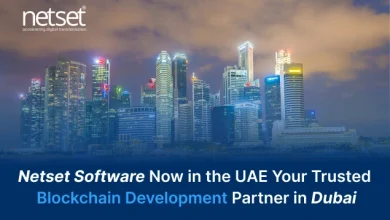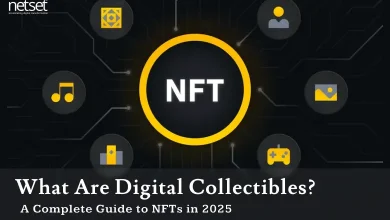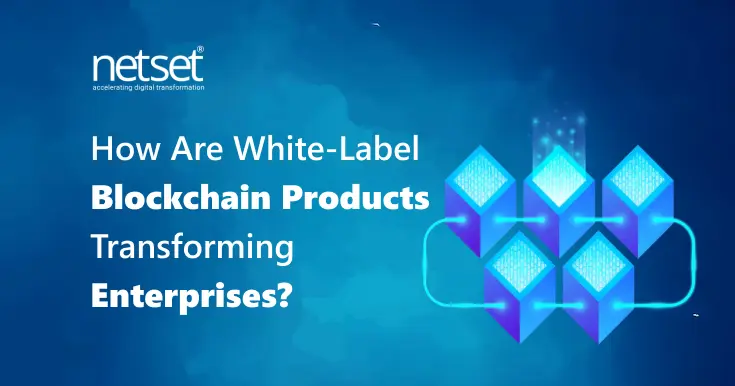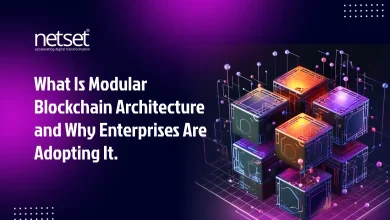Top 10 Must-Have Features for RWA Investment Platforms in 2025
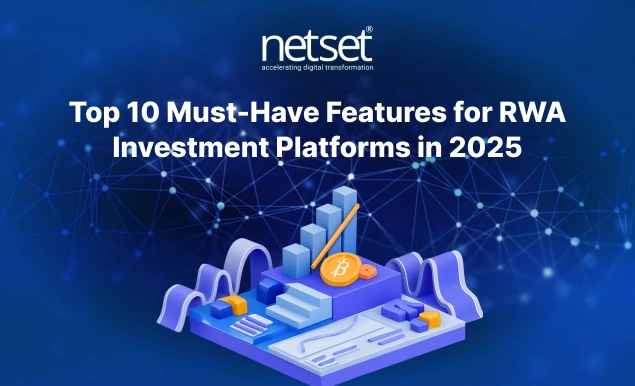
The tokenization is not a future concept and nearly everything can be divided into tokens in this digital world. Due to this, more investors and institutions are finding themselves interested in turning towards blockchain for trading real estate, art pieces, and other physical assets.
When such demands increase, the demand for reliable and secure RWA investment also increases at a very rapid pace. If you are someone planning to build or upgrade an RWA investment platform, it is important for you that you understand the key features that will make your solution future-ready.
With this blog, we are going to share 10 must-have features when it comes to asset tokenization platform development in the year 2025, which will help you stay stronger in the competitive market. Also, this guide is applicable even if you are a startup, so without any further do, let’s start.
Understanding RWA Tokenization
Before taking on the features part, let’s just quickly revisit a brief about RWA tokenization. We know RWA with the term Real world assets tokenization which is the process in which traditional or physical assets like gold, art, bonds and what not, are converted into digital tokens which can be further traded on the Blockchain network. These tokens are proof of ownership of a full or specific part of the asset that can be further traded at any time. Few common benefits of RWA tokenization are:
- Better liquidity
- Lower transaction costs
- Fractional ownership
- Faster settlements
- Greater transparency
Must have features in RWA tokenization
Creating an RWA investment platform that has the potential to deliver the benefits we saw earlier needs a really strong foundation and the right features that we are going to talk about in this section.
#1 Secure Asset Tokenization Engine
At the core of any RWA investment platform stays a secure and scalable tokenization engine, which is responsible for creating and managing the digital tokens that show ownership of physical assets. Why does it matter? Because:
With the help of a secure tokenization engine, every token becomes traceable right from its creation to its current owner. This creates a great chain of unbroken custody without any worries of fraud and lower investor confidence. Plus, data integrity also stays maintained through blockchain immutability, which means once a transaction is recorded, it cannot be modified.
Also, on the basis of the nature of your assets, your platform must have support for different token standards. For example, ERC 20 is very ideal for fractionalized ownership of real estate, while ERC 721 or ERC 1155 is used for unique assets like fine art or collectibles. Supporting both gives flexibility in how assets are shown and traded in the market.
Not to forget that your engine should strictly comply with and widely accept token standards. With standards we refer to compliance like Ethereum’s ERC 20 and ERC 721, which makes sure about the interoperability with major wallets, exchanges, and DeFi protocols. When you create the engine, it must be capable of minting, transferring, and freezing the tokens, and it should also keep complete records on the blockchain.
#2 Regulatory Compliance Tools
Compliance is another vital aspect when it comes to blockchain and real-world asset tokenization. It is because real-world assets are governed by various national and international regulations; the platform should have compliance to such governance. Let’s see a few must-have tools.
For starters, you will require a proper KYC (know your customer) system and an AML (anti-money laundering) verification system that can verify that only the regular users participate. With that, the platform must also give accreditation checks that have the potential to confirm the financial status of the investors in places where only qualified people can participate (like in jurisdictions). More than that, it is great to maintain transparent audit trails and generate detailed regulatory reports that not only keep your operations compliant but also create trust with investors and regulators. The tools above will directly integrate into your system and keep the legal operation smooth so that you can stay away from the major headaches.
#3 Investor Onboarding and KYC Module
While using your platform, no user should feel lost when they register, verify their identities, and start investing. The whole process of onboarding must be simple, guiding the user’s step by step. To achieve this feature smoothly, you can integrate third-party KYC/AML service providers for achieving a streamlined verification process with functionalities like automatic checks and reducing the manual overhead. Make sure to apply the best encryption techniques.
Users can also upload and store their identity documents securely. With that, the system must also cater to the sole investors as well as large players because such flexibility will help you achieve a bigger audience. More than 53% of users abandon a site, so investing in onboarding becomes very important. Once the onboarding experience of a platform goes smoothly, it really helps them to create a loyal user base and lower the abandonment at the time of registration.
#4 Fractional Ownership Capabilities
One big advantage of RWA tokenization is its fractional ownership that lets multiple investors own small portions of an asset. Such capabilities are very valuable when we deal with high-value assets like real estate or art that are inaccessible to the average investor. With fractional ownership, you can also make expensive assets more available to a wider pool of users.
This also inspires portfolio diversification because people can spread small investments in different assets in place of committing a large sum to one. Not only this, but such capabilities will also boost liquidity in the secondary market because fractional tokens are easier to sell or trade than whole assets. Here, your platform should support issuing fractional tokens, calculate ownership shares automatically, and distribute returns. This way, even the smallest investors will get a fair portion of earnings in a fully automated manner.
#5 Secondary Marketplace for Token Trading
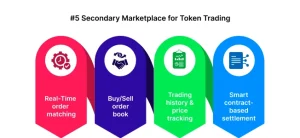
Once users own asset tokens, they should be able to trade them with others. A built-in marketplace will deliver an amazing value to a platform because of real-time interactions between the buyers and sellers. Sub-features like real-time order matching will make the execution of trades fast and efficient. Users will be able to place buy or sell orders, and the system will find matching counterparts without any kind of delays.
For making everything more transparent, you can apply a transparent order book system, which will show open bids to everyone, helping users make guided decisions. Other small features like trading history and price tracking will further deliver insights into how asset values are performing over time and will build investor confidence. All trades must be settled using smart contracts for the best accuracy, speed, and security. When you have a strong secondary market, you directly increase liquidity and engagement of users, becoming a one-stop destination for everything.
#6 Smart Contract Automation
Without smart contracts, the automation of transactions, enforcing terms, and lowering manual oversight are not possible. Let’s talk about how they help the real estate industry in detail.
Starting with the real estate element, they can divide the rental income directly to token holders on a monthly or quarterly basis without any involvement of humans. They can also automatically execute buy or sell orders as soon as certain conditions are met, like reaching a described price point. Not only this, smart contracts can manage the vesting schedules or lockup periods, making sure that tokens are on hold for a required time before they are finally sold. They can even process token buybacks or redemptions automatically using the predefined logic. Such a level of automation surely creates user trust and lowers the risks connected with manual processing or errors.
#7 Real-time asset valuation and oracles
RWAs exist in the physical world, and their values are never the same, as they are changing every time as per the market, requiring really fast real-time systems to track valuations. For the solution, Oracle integrations can fetch real-time asset prices and valuations from trusted data sources specified by you. If you’re wondering why oracles are important, they can make your platform a place with the most accurate valuations for tokenized assets. It can also help you achieve dynamic pricing in trading markets and equip you with better risk management tools.
Plus, it does add a layer of reliability so that investors who know about technical details see your platform as the most accurate and current data provider when they make the decisions. You can see Oracle as a gap bridge between blockchain systems and external financial data.
#8 Multi-Chain and Interoperability Support
It’s 2025, and the blockchain ecosystem should be multichain by default because your RWA platform should not be limited to a single network at any cost. It should be able to support popular networks like Ethereum, Polygon, and BNB Chain, and some other ones. With the help of token standards that are compatible across the whole network, you can achieve wider adoption and technical flexibility.
It should also support cross-chain token bridging, which allows users to transfer their tokens between different blockchains without any loss of value or data. Multi-chain support then increases the reach of your platform, giving more control to users and also protecting your business from getting locked into a single blockchain ecosystem.
#9 User wallet integration and Custody options
What can be better than letting users connect their digital wallets easily on the platform? With both self-custody and third-party custody support, the wallet features must also keep a few important things in mind. Starting with the major element, it should support more than one wallet, like MetaMask and WalletConnect, so that users can get started almost instantly. At the same time, custodial wallet options for compliance can further make sure that you do not miss out on the specific market segment.
When you integrate wallets and custody options, you have to keep the security factor in mind, where elements like two-factor authentication and multiple wallet security layers should be integrated into the platform. When you give wallet options and that too with flexibility in mind, your platform becomes more accessible and boosts user trust, ultimately increasing your growth potential in the end.
#10 Analytics and Reporting Dashboard
When it comes to investment, every investor prefers transparency, which is why your platform should give detailed data and reporting tools so users can track their portfolios, returns, and the performance of assets. A great dashboard must have ROI calculators that can help investors understand how much profit they are making on the go. It should also show easy-to-understand charts for showing the performance of assets over time to help investors analyze their holdings.
Plus, the tax and compliance reports can further make the reporting of financial sheets easy for users when filing for taxes. Other sub-features can be related to transaction history logs, which let users verify every action on their account. So yes, a powerful dashboard will let users make accurate decisions and also create confidence in your platform, which will be a good growth sign for you.
NetSet Software- Your reliable RWA tokenization partner
The chances of your success with the RWA investment platform also depend upon the choice of your digital transformation partner. We at NetSet Software are specialized in real world asset tokenization services, where we have helped a number of businesses to turn real world assets into secure digital tokens.
Not only tokenizing assets, our team can build a complete platform for you in case you are planning to start a platform with asset tokenization platform development that runs smoothly on blockchain technology. All you have to do is book a call with one of our consultants and share your requirements.
Conclusion and Final Suggestions
Tokenization changes the way people used to invest, borrow, and trade in the past. There was no way a property could be divided into tokens, and that too later on. Tokenization and marketplace platforms give speed, security, and flexibility to the users without compromising on compliance.
But, if you are really serious about investing in the RWA tokenization platform, you should not compromise on picking up the right development partner who actually understands your visions and delivers you more than your expectations and the market demand. Each and every feature in a tokenization platform can either make it or break it completely.
So, have a clear vision, apply the mentioned features, find the right development partner, and enter into the market with an amazing marketing strategy.
FAQs
- What is the tokenization of real-world assets?
It is simply a process of converting physical assets like real estate, art, and company shares into digital tokens on a blockchain. Such tokens can be further sold or purchased or used as proof of value. - Why should businesses invest in RWA tokenization platforms?
Tokenization of platforms makes it easier to manage, trade, and track real-world assets in a digital way. They create global investment opportunities, make the liquidity better and reduce the paperwork. And all of that is achieved with powerful blockchain technology. - How much will it cost to create an asset tokenization platform?
The cost depends upon the features, choice of blockchain network, and the location and experience of the development team. It will be best to get in touch with a development team to get a quote in detail. - Which blockchains are best when it comes to RWA tokenization?
There are a few popular choices like Ethereum, Polygon, Solana, and Avalanche. But, again, it is not just about tools; it is also about the skills, so you have to also achieve the right development. - How to find the right development partner for my tokenization project?
Find a company that has the required experience in asset tokenization services. That means you have to check their portfolio and assess the skills of their development team members. These two are the most important elements when picking up your development team.

